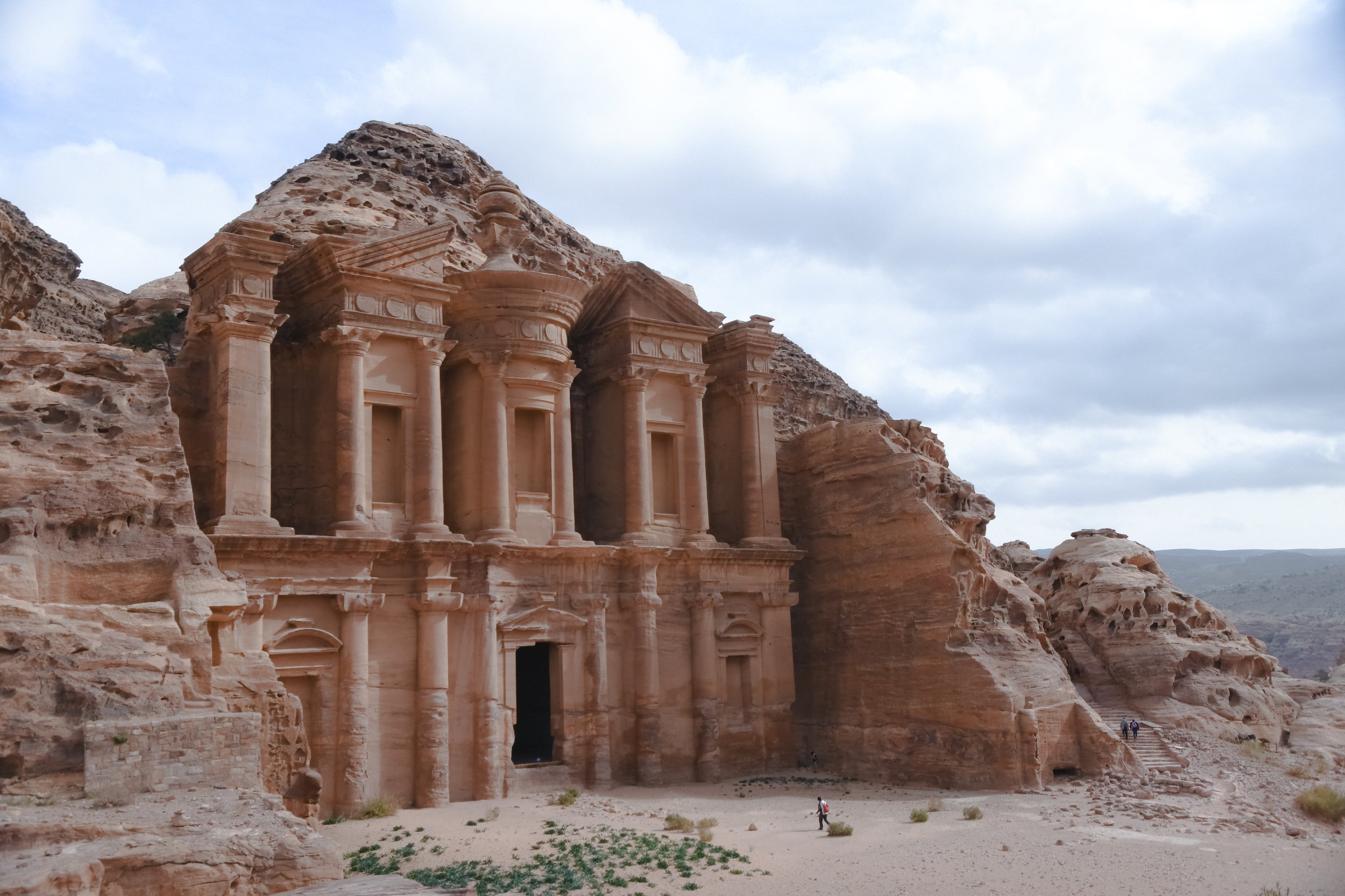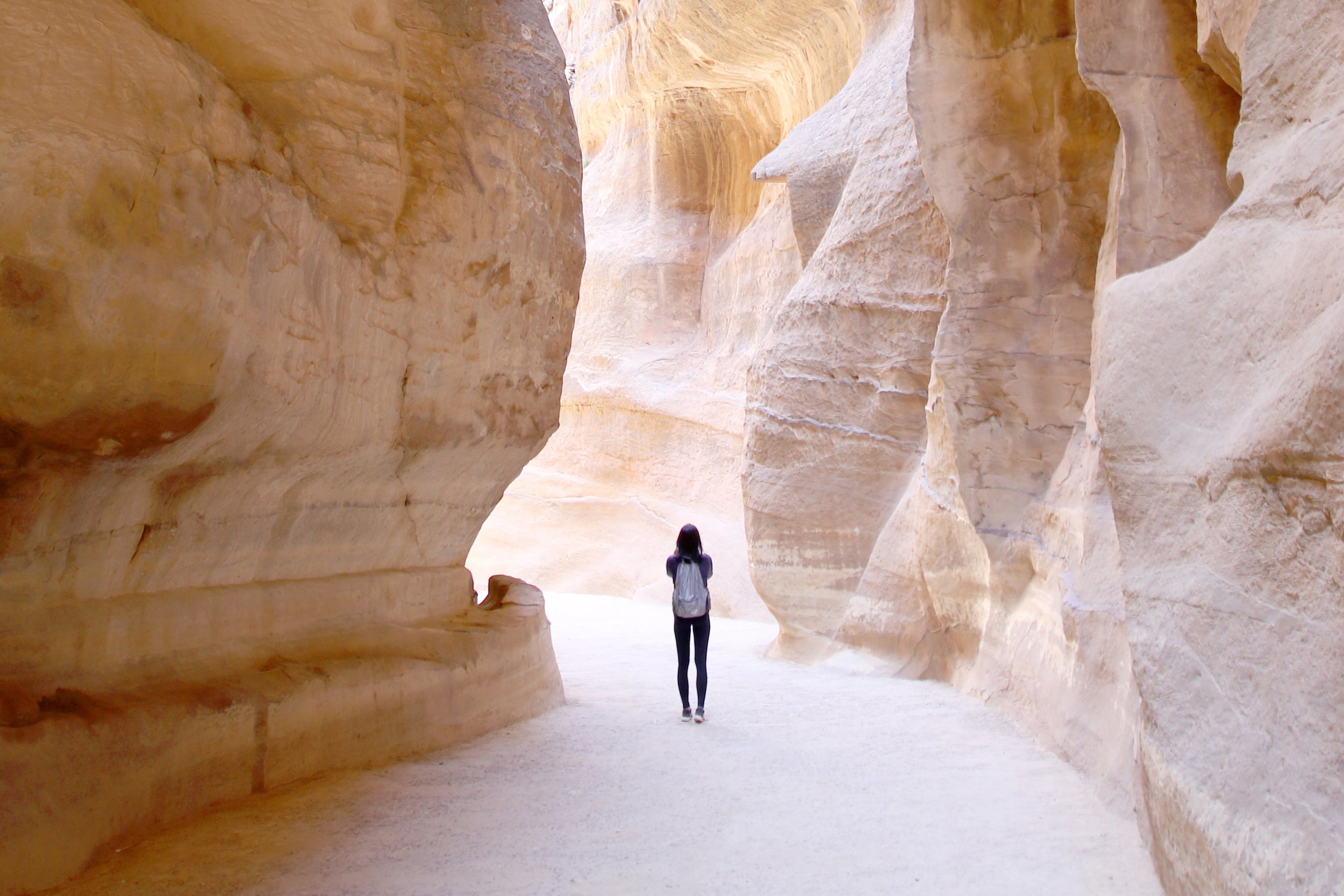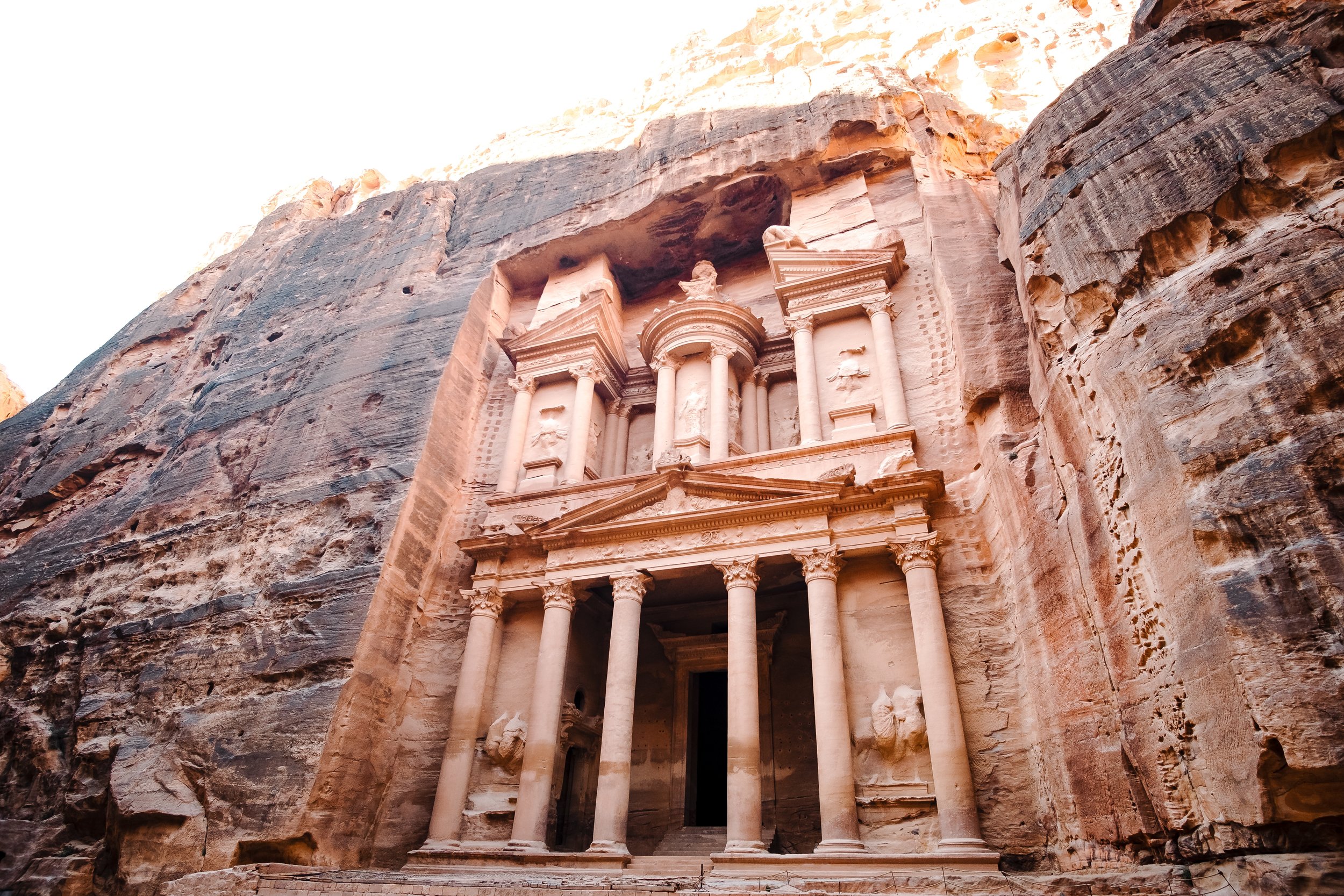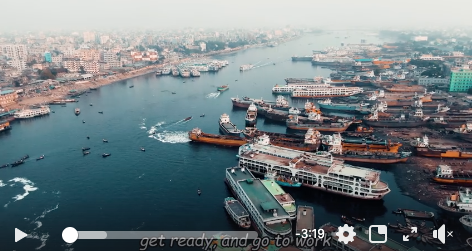This lost city still has secrets to reveal.
As a young child I remember watching movies and reading books about the lost city of Atlantis, but I never heard about the lost city of Petra?
Petra is located several hundred kilometers south of Amman (the capital of Jordan), and is an ancient, ancient city carved into the desert cliffs. Its stunning architecture and unbelievable landscape attract visitors and foreigners from all parts of the globe.

The ancient city was built in the 12th century during the Byzantine period but after hundreds of years was lost from civilization before it was discovered once again in the early 19th century. It is one of the most famous archeological sites in the world and one of the Seven Wonders of the World. Surrounded by the Red Sea, Dead Sea, Wadi Rum, and Wadi Musa, it’s safe to say there is a lot of history in the area. In fact, Petra was one of the first metropolitan cities every constructed, as it was located along a major trade route from Asia to Europe.
But what is inside the lost city of Petra has stunned the world. Many people believe Petra was built for the Gods (or Giants) as the doorways, archways, and buildings are extremely tall. The buildings of Petra are composed of stone that has been sculpted by hand out of the sandstone cliffs using chisels. The engineering of Petra is absolutely incredible, and makes researches wonder how it was actually built.
Let me take you inside to discover some of its secrets.
When you arrive to Petra you will enter through a narrow corridor known as the Siq (roughly a 1 mile long passage with extremely high stone walls created through tectonic forces and worn smooth by water). This passage holds the scars of nature and the works of man across hundreds and thousands of millennia. It is breathtaking.

The first building or facade you will see as you come to the end of the siq (or corridor) is the Al Kahzneh, or “the Treasury.” This is a magnificent building and is commonly known as the “face” of Petra. Turning right at the facade will take you deeper into the city, where you will see many more grand and elaborate buildings (many of them tombs), and possibly the oldest man made structures you have ever lay eyes upon. After several miles of incredible architecture you will near the end of Petra, marked by 850 steps leading up to the famous Monastery.

While my journey through Petra ended at the Monastery, many more mysteries remain beneath the surface of Petra as less than 15 percent of the city has been discovered and over 85 percent is still underground and untouched.
No matter the magnificence of the site, seeing all of Petra would require more than a day - in fact more than a lifetime as the majority of is still lost and waiting to be uncovered.
📍Egypt & Jordan
7 to 12 days from $4,200
Limited to 12 travelers
See Details >
50% off with code: “50OFF”
For select travel dates until December 2024
Offer expires March 31st, 2024
Oman is just a stone’s throw away from Saudi Arabia and Yemen, & many people have no idea where this country is or what it is like. So is Oman safe, or dangerous? Watch to find out!
Bhutan is a small country in the Himalayas, known as the last Shangri-La. With just under 1 million people sandwiched between two of the most populated countries on earth. Is this really the happiest country on earth? Continue watching to find out!
Most people have no idea what Ethiopia is or where it is on a map. Ethiopia is a country located in Africa and is known as the Land of Origins, including the Origin of Humankind...
We are all Ethiopian, here's why!
Meet Bhoben, a fisherman from a small village in Bangladesh, who paddled for 3 days one way by wooden boat through the Sundarbans. He rowed for 3 days just to meet us, or shall I say fish with us. But not what you and I think of as fishing…
Japan has developed a bit of a global reputation for incredible… but also somewhat exotic foods. Ingredients such as sea urchin, puffer fish, fish eggs, and octopus are not uncommon sights in many restaurants in Japan. While these dishes can be intimidating for a visitor, I’d recommend being a little adventurous and trying these with a local friend or guide to show you best eateries and food hotspots!
When I was a young girl, I was fascinated with the story of a boy named Aladdin, a genie, a princess, and a magic carpet. These stories captured my imagination even though I knew that magic carpets didn’t exist. Or do they?
Petra is Located several hundred kilometers south of Amman (the capital of Jordan), and is an ancient, ancient city carved into the desert cliffs. Its stunning architecture and unbelievable landscape attract visitors and foreigners from all parts of the globe.
Southeast Asia. The countries of Vietnam, Cambodia, Laos, Thailand, and Myanmar are home to some of the most unique culture, deep history, and heartwarming people. All of these countries are also home to some of the World’s most stunning temples - in particular temples of Angkor (Angkor Wat) in Cambodia and the Ancient Temples in Bagan Myanmar.
Early in the morning at 5:00am hundreds of monks wake up, leave the temples, and walk through the city streets collecting their morning alms (sticky rice and other simple foods) that is give to them from the local people as a part of a special alms giving ceremony. The monks walk in a single file line down the main streets that lead to the royal palace, where locals kneel by the curbside with their heads bowed and their feet tucked away - showing respect for the monks who are passing by.
While there are many things to do and see in the world, some of the most treasured experiences cannot be planned for. Like the time I was invited to a Llama Blessing in the Lares Valley of Peru. The Lares Valley is tucked away behind Machu Picchu and the Sacred Valley, a journey that will take you past tiny mountain villages that dot the mountainside.
When people think of a desert they think of a place covered in sand and sand dunes. Morocco is home to the Sahara Desert, which spans over 3.5 million square miles, roughly the size of the United States. It stretches from the Red Sea in the east, all the way to the Atlantic Ocean in the west. That’s a lot of sand!
Today I want to introduce you to one of the most incredible women I have ever met, her name is Haju and she is a nomad in the Desert of Morocco!
I am in Bukit Luang with my friend Lillix, the man who talks to monkeys. Lillix grew up in a small village in the jungles of Indonesia, and from a young age, learned to love the jungle. Ever since he was six years old his father would take him to explore the most remote parts of the jungle to help him develop an appreciation for its beauty and importance.
Chefchaouen or Chaouen is known as the Blue Pearl of Morocco because of its narrow streets & buildings that are painted in many shades of blue. So, why is this famous blue city in Morocco, Blue?
Meet my friend Espional. He is from a small village in Papua New Guinea called Asaro, home of the Mudmen Tribe. Experience the Goroka Show and Sing Sing Festival in Papua New Guinea.
Many people wonder where they should stay when they visit another country, and often there are so many choices that you don’t even know where to start. Well, from my experience sometimes it is the most unassuming places that end up being the most special - such as the Riads in Morocco. So where should you stay the next time you visit Morocco? Whether you are in Marrakech, Fes, Tangier, Casablanca, or the Sahara Desert - let me share with you a little secret about the top Morocco Hotels, well they are actually Riads and that is where you should stay if you want an authentic experience in Morocco.
My journey to discover the most interesting places and people around the world has led me to the remote, Northern jungles of Papua New Guinea. This rarely visited location is known as the Sepik River, and is home to an incredible tribe known as the Crocodile Tribe. Join us on a Tour of Papua New Guinea and experience the Goroka Sing Sing Festival and Culture Show!
One of the reasons I love visiting Antarctica and the Southern Hemisphere is because it is one of the few places in the world where you can see Penguins! South Georgia is an Island located in the Southern Hemisphere, just off the peninsula of Antarctica and is home to the largest King Penguin Colony in the world.
When you put an ice cube in your glass do you ever wonder how old it actually is? If you are in the United States, Europe, or a country along the equator the ice in your glass probably isn’t more than a couple of days, or even a couple of hours old. Well in polar regions, like Antarctica, the ice is over 100 THOUSAND years old. Antarctica is the coldest, windiest, driest continent on Earth and holds over 90% of the world’s freshwater as Ice.
Over the years many people have risked their lives to travel Antarctica, document its wildlife, and conduct research. Ultimately the efforts of these early explorers made it possible for researchers, naturalists, and people just like you and I to visit this incredible place.
Imagine taking a 10 hour flight, 3 hour drive, 1 hour train ride , 30 minute public bus, and a a 15 minute hike, you will find yourself at a place voted to be one of the New 7 Wonders of the World--Machu Picchu. While many people visit Machu Picchu, which don't get me wrong - is a spectacular site- they often miss exploring the beauty of the valleys & villages that surround it. Like visiting Juan, his family, and their 1000 alpacas.
The holidays have many of us hunting through department stores for the perfect gift. And yet a 20-year study by Cornell University psychology professor Thomas Gilovich, found that individuals gain greater satisfaction and happiness from experiences rather than things.
This past September, I explored the tropical paradise of Sumatra. I’ve always wanted to visit this breathtaking Indonesian island, which is home to the critically endangered Sumatran orangutan. Sumatra offers picturesque views and exciting adventures for nature lovers, but it’s the islands diverse wildlife that really stands out. While there, I embarked on a once-in-a-lifetime orangutan trek in Gunung Leuser National Park. This remarkable experience was one I’ll never forget. Keep reading to learn more about trekking with orangutans in Sumatra!
I’ve come to discover that, as people, we are actually all quite the same. And as a human, I have learned to be grateful for one thing in particular—Connection. The more opportunity I have to travel, the more I have learned the importance and beauty of true connection with people.
When I arrived in Papua New Guinea, I was amazed to see such incredible people… like the Kalam Tribe!
Tune in Wednesday 28 August at 11am PST / 2pm EST! Join CEO Kylie Chenn as she talks through all things Vietnam and Myanmar! She'll be answering all of your Top Travel Questions about this region of the world including what you must-see, what she loves most about Southeast Asia, the best foods to try, what to pack, and more!
Tune in at 11am PST / 2pm EST this Wednesday! Join Kylie Chenn as she talks through all things Egypt and Jordan, answering your Top Travel Questions... Is Egypt Safe, Top Things to Do, How to Pack, Must Eats in Jordan, and more!
We had the opportunity to travel with some INCREDIBLE Content Creators, Brands, and Influencers on our Tour of Peru! We had an AMAZING time as we immersed ourselves in Peru's BEAUTIFUL culture, cuisine, and landscapes.
Turquoise blue waters, black sand beaches, and vibrant green rainforests— Costa Rica is the ultimate bucket-list destination full of intense natural beauty. It’s here in the south of Central America that you’ll find some of the world’s best wildlife, waterfalls, colors, hiking, beaches, horseback riding, zip lining, culture, and cuisine. From watching howler monkeys swing in the jungle, to surfing on the salty crisp waves, our Costa Rica Expedition has something for everyone. Keep reading to learn about the best places to visit in Costa Rica, and be sure to check out our Costa Rica Travel Video so you can see our epic experience!































As women we are connected, no matter where we live, what we look like, what job we have, or the lifestyle we live. And as women, it’s our mission to empower every other woman out there. Introducing the Adventure Dress. Made by women, for women.